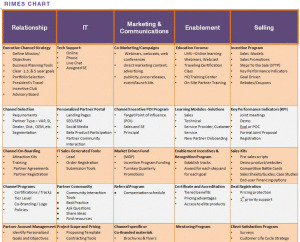 If Dorothy thought lions, tigers, and bears sounded scary, imagine the anxiety she would feel living in our complex, multi-national channel world. I have to admit I still occasionally break out into a cold sweat when I try and wrap my head around all that’s involved with global channel incentive programs. 7 years ago, I was intimidated by the idea of building and managing a global platform and strategy, and rightfully so. But today that fear has become more like a sense of excitement and anticipation when visiting a new country, the feeling you might get right before you start a new adventure. I recently heard that there is no such thing “too much” adventure. This statement is certainly true as it relates to your channel incentive programs. The fact is, unless you are adventurous with your channel marketing and engagement, you are falling behind. Let’s continue to be in the forefront!
If Dorothy thought lions, tigers, and bears sounded scary, imagine the anxiety she would feel living in our complex, multi-national channel world. I have to admit I still occasionally break out into a cold sweat when I try and wrap my head around all that’s involved with global channel incentive programs. 7 years ago, I was intimidated by the idea of building and managing a global platform and strategy, and rightfully so. But today that fear has become more like a sense of excitement and anticipation when visiting a new country, the feeling you might get right before you start a new adventure. I recently heard that there is no such thing “too much” adventure. This statement is certainly true as it relates to your channel incentive programs. The fact is, unless you are adventurous with your channel marketing and engagement, you are falling behind. Let’s continue to be in the forefront!
Adventure is a good thing, but only if we properly prepare for the journey. Most importantly, if you decide to pursue a global channel incentive program, careful navigation is key. To be sure, while you aren’t signing up for a Mount Everest expedition, running a global program isn’t exactly a walk in the park either. Above all else you need to select the proper “guide” (vendor partner) for your “journey,” one that not only has the global footprint and resources to make the trip a successful one, but also has the years of experience and scar tissue from actually executing these types of exhilarating solutions.
But maybe we’re getting ahead of ourselves. Why would anyone want to pursue this holistic global channel “adventure” in the first place? Well, there are a few reasons I can think of:
- One platform that can scale across multiple business units, channels, and 132 countries
- Consistency and continuity, while providing flexibility in each region and business unit
- Sharing best practices across the globe, while providing flexibility to each region/business unit. that are applied to their unique business objectives and sales channels
- Analytics—a single pane-of-glass reporting and channel insight
There are a handful of channel incentive companies that think they have the resources in place to run this kind of incentive program, but only a few who have actually gone out and executed them successfully. The reality is global incentive programs are hard. I mean really hard.
So what’s the trick? “Plan global, execute local.” In a nutshell this means having a global platform that provides constancy, continuity, and controls while providing local strategy and program management (people) down to the theater or even the country level.
The fact is that this type of strategy can generate the kinds of incremental mindshare and market share gains that make it simply a no-brainer! Imagine empowering your regional sales and marketing leadership the flexibility to launch their unique incentive campaigns. And while I certainly understand that a foray out into the global channel arena can be a bit daunting at first—heck, it was for me!—if you can overcome the initial fear of the new, there are rewards to be reaped that will make you glad you took that bold first step into the unknown. After all, isn’t that what adventure is all about?
Is your global channel incentive program giving localized flexibility to multinational sales teams? Are you considering extending your program across the globe?
As always, reach out to me with idea, questions, and comments.
Move the Channel,



